by Lisa Cooke | Jan 13, 2017 | 01 What's New, Church, Records & databases |
Special thanks to the New England Historic Genealogical Society and the Archdiocese of Boston for their effort to make Sacramental records for genealogy available online. These and other new and updated genealogical collections are mentioned in this weeks list from the United States, Ireland, United Kingdom, Italy, and free record searches at Findmypast!

United States (New England area) & Canada – Sacramental Records for Genealogy
NEHGS has announced the New England Historic Genealogical Society (NEHGS) and Archdiocese of Boston have made millions of 18th and 19th century sacramental records searchable online.
The records, which document baptisms, confirmations, marriages, and other sacraments, cover more than 150 parishes from throughout eastern Massachusetts. They also hold records that were carried out in other locations in New England and parts of Canada.
These detailed documents are a critical resource for researchers, historians, and genealogists, especially when secular records are unavailable. They record important moments in the lives of the individuals, families, and communities.
Though the fully searchable data will not be available immediately, anyone can browse images of parish records as they are completed. Click here to learn
how to browse records.
United States – Oklahoma- Vital Records
Ok2Explore is a free searchable index of births and deaths that occurred in the state of Oklahoma. Only limited information is available for births occurring more than 20 years ago and deaths occurring more than 5 years ago.
Visitors to the site may search the index using any combination of the subject’s name, date of event (birth or death,) county of event, and sex of the subject.
Remember this is only an index version of the record, but you can order certified copies for a fee.
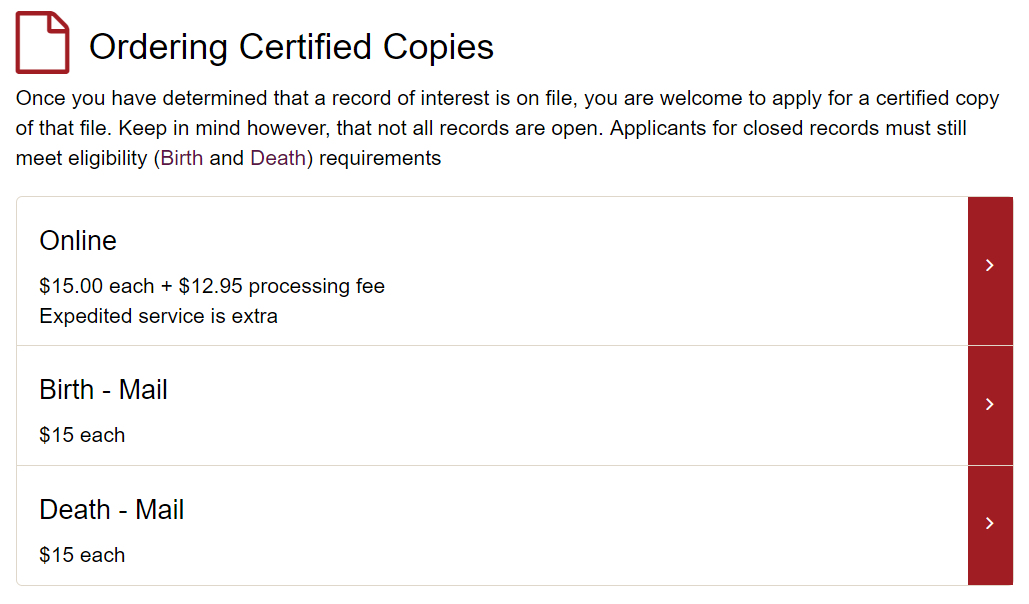
Ireland – Petty Sessions
New and updated genealogical collections this week include the Ireland, Petty Sessions Court Registers at Findmypast.
With over 227,700 new records, the petty sessions handled the bulk of lesser criminal and civil legal proceedings in Ireland. Ireland, Petty Sessions Court Registers now contains over 22.8 million records and is the largest collection of Irish court & prison records available anywhere online. Each record includes a transcript and a scanned image of the original document. These documents will include details of victims, witnesses and the accused, such as an address, date in court, details of the offence, details of the verdict, and the sentence.
Cases range from merchants who had not paid duty on their goods, to workers suing for unpaid wages. Farmers were sometimes fined for letting their cattle wander or for allowing their cart to be driven without their name painted on the side. Public drunkenness was a common offence, as was assault and general rowdiness. Though these records are not considered typical for finding vital information, they can work as great clues to lead you to the information you need.
United Kingdom – Dorset – Memorial Inscriptions
The Dorset Memorial Inscriptions collection at Findmypast contains over 40,000 new records. The collection contains details of inscriptions found on gravestones, tombs, monuments and even stained glass windows throughout 266 parishes within English county.
Each record includes a transcript. The information contained varies, however, most will include a combination of birth year, death year, burial date and location, relative’s names, memorial type and notes on the inscription.
United Kingdom – Warwickshire – Burials
Also at Findmypast, over 175,000 new records have been added to the Warwickshire Burials. The entire collection now contains more 1 million records and includes monumental inscriptions from Clifton Road Cemetery in Rugby.
Each record includes a transcript of the original burial registry or details from the monumental inscription. While the information listed will vary depending on the records original source, most will include your ancestor’s name, age, birth year, death date, burial year, burial location and the name of the officiating minister. A number of records will also include parent’s names and residence. Inscriptions will include information recorded on the individual’s grave stone and will usually include the name of the individual’s spouse, children and/or parents. Also, some grave sites may have more than one person buried in the same plot.
United Kingdom – Northumberland & Durham – Monumental Inscriptions
Over 16,000 records for the Northumberland & Durham Monumental Inscriptions at Findmypast are now available. These include the full description found on a grave stone or monument which will often include additional family names and dates.
Each record includes a transcript of the original source material. The amount of information may vary due to the age and legibility of individual monuments, but most records will include birth date, burial year, burial place, death date, denomination, inscription, and even the type of stone their monument was made from.
Ireland – Quaker Congregational Records
Also at Findmypast, Ireland, Society Of Friends (Quaker) Congregational Records has been updated with an additional 5,000 congregational records. Congregational records include details of the meetings your ancestor’s attended and the activities they engaged in. This is a nice way to enrich your family story.
These records, dating back to the mid-1600s, include minutes from half-yearly Quaker meetings. Each entry includes an image of the original handwritten record. The information included will vary, but most will include the congregation date, address, meeting, archive and reference.
MyHeritage Year End Review
MyHeritage had some pretty exciting things going on in 2016. In their recent blog post, “A Look Back at 2016,” you will see the list including the MyHeritage mobile app, the introduction of Tribal Quest, the debut of the beautiful Sun Chart, and their recent announcement of MyHeritage DNA, just to name a few. Visit the blog post to see the MyHeritage year-in-review for yourself!
Venezuela – Australia – El Salvador – Philippines – Netherlands – Canada – Spain – Slovenia – U. S. – Italy
FamilySearch.org took a short break over the holidays from updating their collections, but with the start of the new year, they have added and updated over 20 collections from all over the world! Check out these great records:
| Venezuela, Diocese of San Cristóbal, Catholic Church Records, 1601-1962 |
688,577 |
*09 Jan 2017 |
| Australia, Queensland, Immigration indexes, 1864-1940 |
64,508 |
*09 Jan 2017 |
| El Salvador Civil Registration, 1704-1990 |
832,749 |
*06 Jan 2017 |
| Philippines, Manila, Civil Registration, 1899-1984 |
2,847,720 |
*06 Jan 2017 |
| Netherlands, Archival Indexes, Miscellaneous Records |
1,254,022 |
*06 Jan 2017 |
| Canada Census, 1901 |
5,343,565 |
*06 Jan 2017 |
| Spain, Soldier Personal Service Files, 1835-1940 |
1,687 |
*06 Jan 2017 |
| BillionGraves Index |
20,128,469 |
*06 Jan 2017 |
| Slovenia, Ljubljana, Funeral Accounts, 1937-1970 |
5,664 |
*06 Jan 2017 |
| Massachusetts, Town Clerk, Vital and Town Records, 1626-2001 |
2,608,950 |
*05 Jan 2017 |
| Italy, Rieti, Civil Registration (State Archive), 1840-1945 |
134,767 |
*05 Jan 2017 |
| Indiana Marriages, 1811-2007 |
3,311,060 |
*05 Jan 2017 |
| Italy, Enna, Civil Registration (State Archive), 1866-1944 |
131,581 |
*05 Jan 2017 |
| Italy, Reggio Calabria, Civil Registration (State Archive), 1784-1943 |
108,208 |
*05 Jan 2017 |
| Italy, Trapani, Civil Registration (State Archive), 1906-1928 |
105,264 |
*05 Jan 2017 |
| Italy, Pescara, Civil Registration (State Archive), 1809-1929 |
385,939 |
*05 Jan 2017 |
| Italy, Cremona, Civil Registration (State Archive), 1744-1942 |
425,374 |
*05 Jan 2017 |
| Italy, Bergamo, Civil Registration (State Archive), 1866-1901 |
629,035 |
*05 Jan 2017 |
| Italy, Caltanissetta, Civil Registration (State Archive), 1820-1935 |
403,003 |
*05 Jan 2017 |
| Italy, Napoli, Civil Registration (State Archive), 1809-1865 |
633,646 |
*05 Jan 2017 |
| Italy, Taranto, Civil Registration (State Archive), 1809-1926 |
272,929 |
*05 Jan 2017 |
| Oklahoma, School Records, 1895-1936 |
90,841 |
*04 Jan 2017 |
Free Record Searches at Findmypast
Findmypast is offering a free records search weekend from January 12 – 15th, 2017. Don’t miss this amazing opportunity!
For records in the United Kingdom, click here.
For records in the US, click here.
For records in Ireland, click here.
For records in Australia, click here.
by Lisa Cooke | Jan 25, 2017 | 01 What's New, Adoption, Book Club |
Genealogy for adoptees can be a difficult journey. A train ticket from 1856 and one of our most popular Genealogy Gems Book Club titles helped one woman solve an adoption family mystery. Here’s her story.

Ben Brooksbank [CC BY-SA 2.0 (http://creativecommons.org/licenses/by-sa/2.0)], via Wikimedia Commons
Adoption Mystery: Solved
I recently read an article that I just had to share! Julia Park Tracey’s two-times great grandfather, William Lozier, was adopted. She wanted to trace his family history. Her only clue was the receipt for a train fare from New York’s Home for the Friendless to Oberlin, Ohio that William had. The ticket cost $7.50 and was dated 1856.
With a little bit of easy math, Julia realized that William would have been a three-year old at the time. Can you imagine? Julia was intrigued by the finding, but didn’t think much more about it until she read Orphan Train by Christina Baker Kline. This piqued her curiosity about Williams’s story and she started researching. What she found was an astonishing story of family struggling to stay together during the hardships of 19th century life.
Along her research journey, Julia learned that William’s mother was widowed in upstate New York in 1848. Consequently, the woman lost the family farm and needed to give up her two oldest boys to an orphanage. She managed to hold on to her oldest daughter and baby William while she worked as a seamstress. Sadly, she still couldn’t make ends meet and ended up placing her last two children in an orphanage as well.
Julia explains in the article: “Martha was undaunted; she worked and saved, and eventually wrote to ask for her children back. The orphanage did not respond. In those days, a child’s moral and spiritual welfare were tantamount, and a single mother was seen as not fit to parent. Nevertheless, she found her way to her daughter, and at least one of her middle sons, if not both. Martha lived the rest of her life with her married daughter and her grandchildren. She died between 1900 and 1910, [but] she never saw nor heard of what had happened to Will.”
With these new pieces of information, Julia was able to trace the line back through time and generations. She even learned a little more about her unexpected DNA results! I am sure it was very satisfying to finally piece together the story of the old train ticket and William’s family story. Even the smallest clues like the old train ticket can lead to long-forgotten stories that add to our family history tapestry. Genealogy is all about persistence, and much like a detective, the smallest piece of evidence can make all the difference!
More on Genealogy for Adoptees
 If you’ve been a Premium member for a while, you’ll recall Orphan Train by Christina Baker Kline. It was one of our first Genealogy Gems Book Club selections—and based on feedback from you, it’s been one of our most popular choices. If you haven’t listened to Premium episode 121 which includes our interview with Christina, I encourage you to go back and listen. In that conversation, you’ll learn about the history of the orphan train riders in the U.S. and Canada and how the author researched it.
If you’ve been a Premium member for a while, you’ll recall Orphan Train by Christina Baker Kline. It was one of our first Genealogy Gems Book Club selections—and based on feedback from you, it’s been one of our most popular choices. If you haven’t listened to Premium episode 121 which includes our interview with Christina, I encourage you to go back and listen. In that conversation, you’ll learn about the history of the orphan train riders in the U.S. and Canada and how the author researched it.
Learn more about the Orphan Train and it’s riders in this post: “Road Trip Anyone? An Orphan Train Museum.”
See what else we’ve read by clicking: Genealogy Gems Book Club
by Lisa Cooke | May 13, 2017 | 01 What's New, FamilySearch, Research Skills |
I have thoroughly enjoyed having Amie Tennant as a blogger for the past year. In her final blog post for Genealogy Gems she takes us on a tour of her home state’s digital records. Then she will be turning all of her attentions to her own genealogical certification. Thank you Amie for all of your helpful and thoroughly enjoyable posts! – Lisa Louise Cooke
Ohio genealogy research goes digital. You can now virtually walk into any courthouse in Ohio with the click of the mouse. Check out the amazing browse-only databases at FamilySearch for Ohio and other states, and take your family history research to the next level.
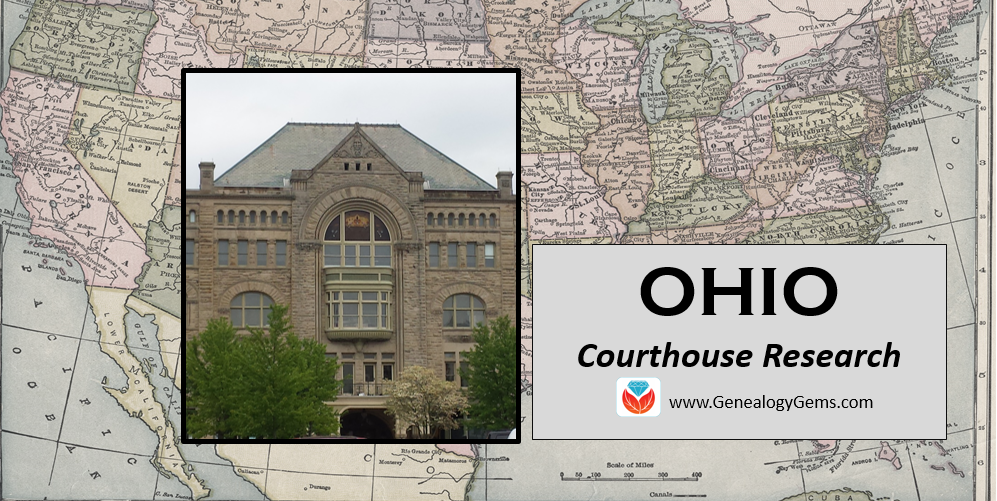
I use FamilySearch.org to search courthouse record books all the time. In particular, the Ohio Probate Records, 1789-1996 now have nearly 7 million digital images of county record books such as wills, estate files, guardianship records, naturalization records, minutes, bonds, and settlements. In fact, many other states have their court record books online at FamilySearch, too. So, why haven’t you noticed before?
Browse-only Databases vs. Indexed Databases
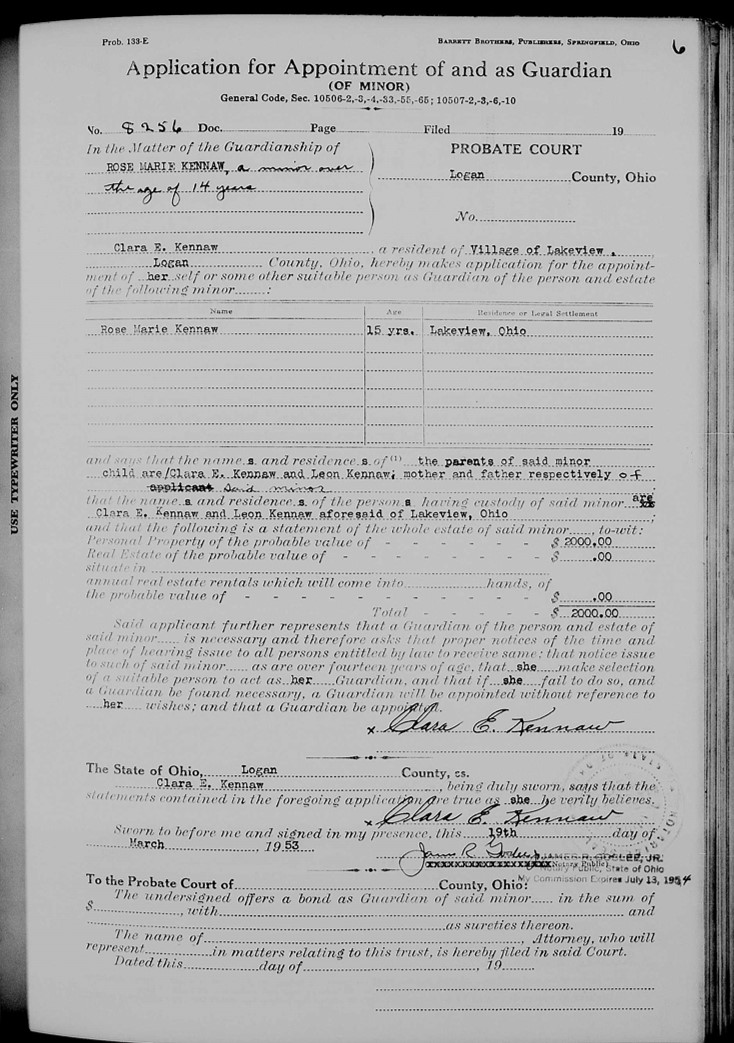 You may have read our previous post on step-by-step instructions to using browse-only databases at FamilySearch. If you didn’t, you should know that when you are searching for records at FamilySearch using the traditional search fields, you are only searching for records that have been indexed. In other words, there may be thousands of records you need on the site, but you won’t find them. They have not been indexed by a searchable name, place, or date. Instead, you need to go in the virtual “back door.”
You may have read our previous post on step-by-step instructions to using browse-only databases at FamilySearch. If you didn’t, you should know that when you are searching for records at FamilySearch using the traditional search fields, you are only searching for records that have been indexed. In other words, there may be thousands of records you need on the site, but you won’t find them. They have not been indexed by a searchable name, place, or date. Instead, you need to go in the virtual “back door.”
Step 1: First, go to FamilySearch and sign in. Next, click Search at the top right. Now you will see a map of the world. Click on the desired location. I have chosen the U.S., but you can choose any country you are interested in.
Step 2: Once you choose your desired country or continent, a pop-up list will be available and allow you to choose the state (or country) you wish to search in. In this case, a list of the U.S. states appears and I clicked on Ohio.
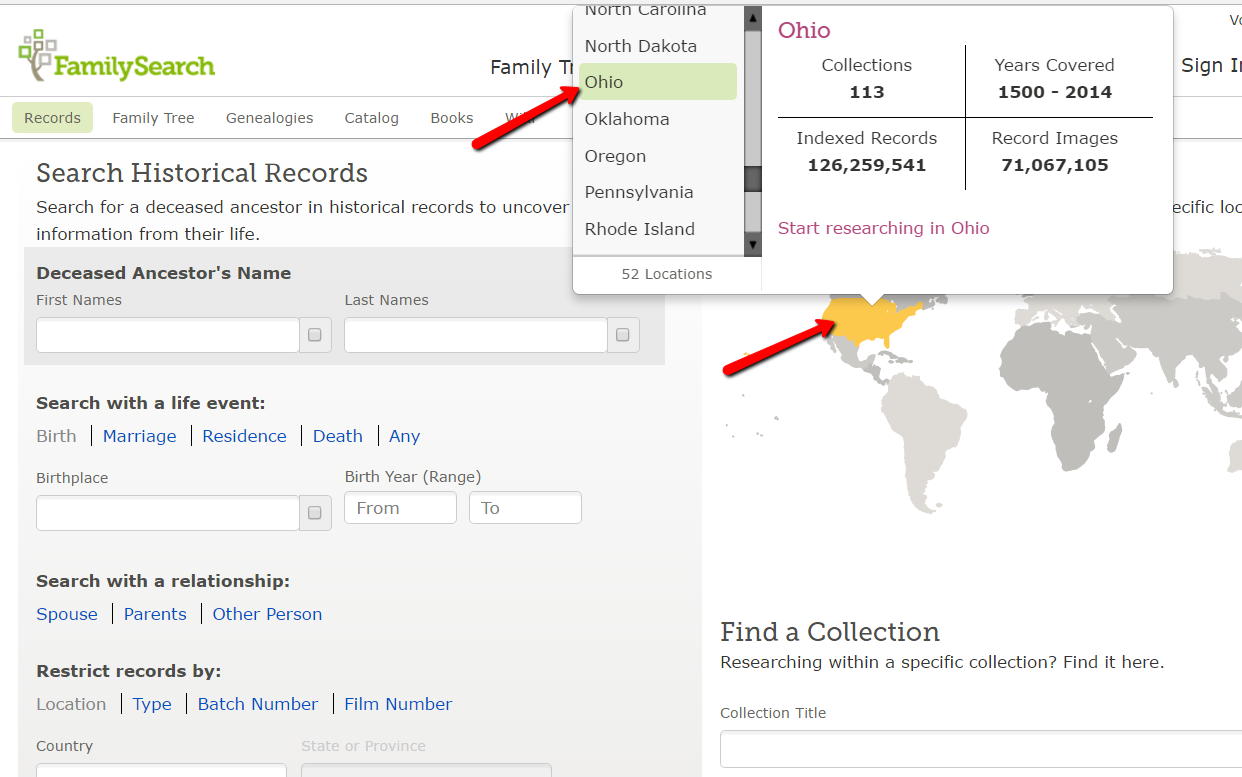
Step 3: The system will direct you to a new page. You will first see the Ohio Indexed Historical Records. These are the records and collections that have been indexed and are searchable by name, date, and place. Though these are great, they are not the record collections I want to share with you today.
Instead, scroll down until you see the heading Ohio Image Only Historical Records. You will notice several databases such as cemetery records, church records, naturalization records, etc. All of these are browseable. That means you will use them like you would microfilm.
Step 4: I want to bring your attention to a specific record collection, so scroll down even further until you see Ohio Probate Records, 1789-1996. Click it.
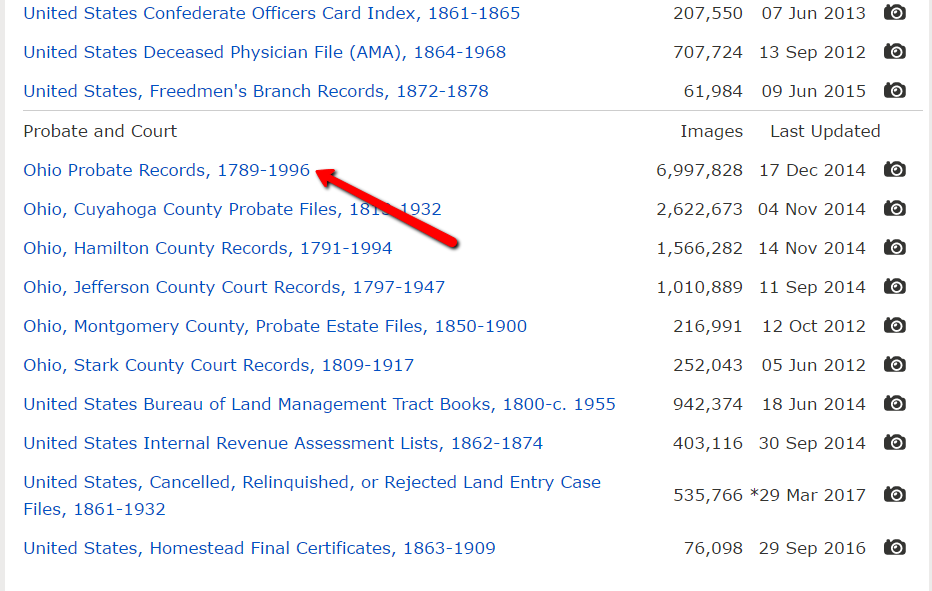
At the next screen, you will see you can browse the 6,997,828 Ohio probate records and you are probably thinking, “What!? I can’t possibly browse through nearly 7 million records!” But, you can, so go ahead and click it!
Step 5: At the new screen, you will see everything is broken up into counties. Click on the county you are interested in researching. You will next see a list of possible record books available for that county. Each county will vary, so where you may find guardianship records available in one county, you might not find them in another.
Ohio Genealogy Research at the Courthouse
As a refresher, courthouse research is often imperative to thorough genealogy research. Here is a helpful chart of the type of information you may find in these types of court records. Be sure to remember: records and the amount of information they contain change over time.
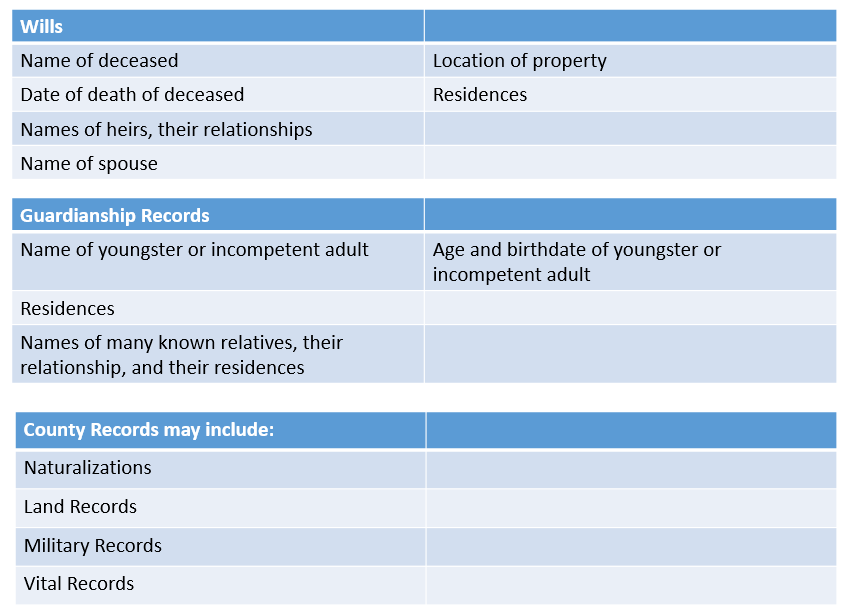
More on Courthouse Research Techniques
Are you looking to understand the value of courthouse research and how to use those records to overcome brick walls in your family tree? Read 4 Ways to Power Up Your Courthouse Research Skills from our own Sunny Morton.
by Lisa Cooke | Apr 3, 2015 | 01 What's New, African-American, Ancestry, Australian, British, Canadian, Cemeteries, FamilySearch, Findmypast, Military, Records & databases, United States
Each Friday we share a list of selected new genealogy records online. Watch for records in which your ancestors might appear–and get inspired by the  kinds of records that may be out there waiting for you to discover. This week: Australian cemetery records, British military officer deaths, various U.S. passenger lists and North Carolina marriage records.
kinds of records that may be out there waiting for you to discover. This week: Australian cemetery records, British military officer deaths, various U.S. passenger lists and North Carolina marriage records.
AUSTRALIAN CEMETERY RECORDS. Two million indexed records have been added to the free Australia, Queensland Cemetery Records, 1802–1990 dataset at FamilySearch.org. According to the site, “The records include an index which combines several other indexes, cemetery transcriptions, burial and other records from cemeteries in Queensland….Cemetery records are especially helpful for identifying ancestors who were not recorded in other records, such as children who died young or women. They may also give clues to finding more information. In Australia, the first cemetery is reported to have been in Sydney in 1788.”
BRITISH MILITARY OFFICER DEATHS. FindMyPast’s new dataset, Royal Artillery Officer Deaths 1850-2011, lists the details of over 17,000 commissioned officers who were killed or died during the campaigns in Kosovo, Bosnia, Borneo and Iraq as well as the First and Second World Wars. It is estimated that since the regiment’s formation in May 1716, over 2.5 million men and women have served with the regiment. Each record includes a transcript of details found in the original records.
US PASSENGER LISTS. Browsable images were added to several existing US immigration records. Click here (and then scroll down) to view a table that has links directly to these datasets:
- For San Diego, CA:Airplane Passenger and Crew Lists, 1929–1954 and an apparently segregated Chinese Passenger and Crew Lists, 1905–1923;
- San Francisco, CA Passenger Lists, 1893–1953;
- Key West, FL Passenger Lists, 1898-1945;
- Minnesota Passenger Lists, 1910-1923;
- New York City, NY Passenger and Crew Lists Soundex (meaning an index based on how a name sounds), 1887-1921; (this is actually a new image collection)
- North Dakota Manifests of Immigrant Arrivals, 1910-1952 (this is also new).
NORTH CAROLINA (US) COUNTY MARRIAGES, 1741-2011. This new dataset on Ancestry “includes images of marriage bonds, licenses, certificates, and registers from 87 different counties.” According to an Ancestry blog post, some marriages have multiple records in this collection, like a bond and an indexed marriage record. This record set may be particularly useful for those tracing African-American marriages, as they “reference the joining of couples living as man and wife dating back to 1820, and possibly earlier…. Sometimes they also include the names of their former owners.” There’s a free, similar-looking dataset at FamilySearch, but the dates aren’t as extensive (it covers 1762-1979).
 Tip: When searching within record sets like these, read the record collection description! Sometimes you are just seeing a partial collection that is being updated on an ongoing basis. Some years or locales may be missing from an otherwise complete record set.
Tip: When searching within record sets like these, read the record collection description! Sometimes you are just seeing a partial collection that is being updated on an ongoing basis. Some years or locales may be missing from an otherwise complete record set.
When you have questions that aren’t answered in the record collection description online, Google them! Use keywords like the type of record (“marriage records”) and the missing locale (“Burdett County”) to see whether other sites can lead you to these records or confirm that they don’t exist. Learn more about advanced Google searching for genealogy in the fully-updated 2nd edition of The Genealogist’s Google Toolbox by Lisa Louise Cooke.
by Lisa Cooke | Aug 12, 2016 | 01 What's New, Records & databases
This week’s round-up of new and updated genealogical records will begin in the United States with records from Minnesota and New Jersey. Our final destination is Yorkshire, England with the incredible new and updated collections at Findmypast. Baptisms, marriages, banns, and more!

Ancestry has a new record collection entitled “New Jersey, Episcopal Diocese of Newark Church Records, 1809-1816, 1825-1970.” In this group of records, you will find parish registers from Episcopal churches in the Diocese of Newark. Each register provides a record of the baptisms, marriages, and burials performed at that church. The records are indexed and are easily searchable. Sometimes, these registers include a list of families, persons confirmed, communicants, and details on offerings received by the church. However, these lists of families, communicants, et cetera are not yet indexed.
Baptismal records typically include, the name of the child, parents’ names, baptism date, and the officiator. In many cases the birth date and place are noted as well.
Marriage records include the marriage date, the couple’s names, residences, and the name of the officiator.
Lastly, burial records list the name of the deceased, date of death, date and place of the funeral, and officiating minister. Some funeral records may even include the cause of death and date and place of burial.
United States – New Jersey – State Census
Genealogists are usually well acquainted with the federal censuses taken each decade. Here in the United States, the first was taken in 1790. Many researchers may not know, however, that some states were taking state censuses every ten years on the five’s. For example, New Jersey has a census from 1855.
FamilySearch.org offers free access to all their database collections, including the New Jersey State Census of 1855. Most towns included in the census will only include the names of head-of-households, but the returns for Pequanac Township in Morris County also list the names of the wife and children in each household.
Missing areas in this census include, Burlington, Cape May, Mercer, Middlesex, Ocean, and Salem counties and unfortunately, other areas may be incomplete.
United States – Minnesota – School Records
FamilySearch has also made the Minnesota, Clay County, School Census Records, 1909-1962 available online. School records are a great resource for finding missing children in your family tree.
These records include digital images, but be aware! Some of the records contain many errors with some years incorrectly identified, particularly the 1960’s. Records will typically include the name of the student, the age of the student, and their parents’ or legal guardians’ names.
United States – Military

Page from Roll 1 1798 Aug-1806 Dec
U.S. Muster Rolls of the Marine Corps, 1798-1937 can now be searched from FamilySearch. These digital images were taken from microfilm rolls at the National Archives. The records are arranged chronologically by month, then by post, station or ship, and are part of Record Group 127 Records of the U.S. Marine Corps. Not all of these muster rolls are complete and some have not yet been indexed. Be sure to check back regularly as more of the records are indexed.
In the meantime, if you do find your targeted ancestor, the following information may be listed:
- Name of officer or enlisted man
- Rank and unit in which served
- Date of enlistment
- Date of re-enlistment
- Name of ship
- Notes regarding promotions, transfers, physical description, etc.
In some cases, muster rolls also contain the following:
- Injuries or illness and type of treatment
- Date of death or discharge
- Date of desertion
- Date of apprehension
- Date of court martial
- Sentence of court-martial
England: Yorkshire Genealogy Records – Baptisms
Findmypast has just added four new collections for Yorkshire England. The Yorkshire Baptism records collection has over 79,000 new records. These new additions cover Church of England parishes across Rotherham, the Roman Catholic parishes of Doncaster, St Peter in Chains, Knaresborough, St Mary, Rotherham, St Bede, Sheffield, St Marie Cathedral, Sheffield, St Vincent and Staveley, and St Joseph. Each record includes a transcript and an image of the original document.
By using the parish location and the parents names, you may be able to continue your search in the next collection.
England: Yorkshire Genealogy Records – Marriages
With over 28,000 new records added to this Findmypast collection, you may finally be able to locate great-grandpa’s marriage record in the Yorkshire Marriages. The record collection actually has over 2.4 million records spanning near 400 years. Because of the time span covering several centuries, information contained on the records may vary. You may find any of the following pieces of information:
- Name
- Birth year
- Marriage date and place
- Residence
- Occupation
- Marital Status
- Spouse’s name, residence, and occupation
- Father’s name and Spouse’s father’s name
- Name of witnesses
England: Yorkshire Genealogy Records – Banns
Findmypast’s collection of Yorkshire Banns has some new additions. Each of the nearly 600,000 records contain both a transcript and an image of the original document. Some information will vary, but may include a name, place of banns, date of banns, marriage year, residence, and the name of their spouse.
These banns cover a very lengthy time span with records as early as the 1600’s through the 1930’s. In this case, a bann of marriage is the public announcement in a Christian parish church of an upcoming marriage. Banns were read on three consecutive Sundays in the church of both the bride and the groom.
England: Yorkshire Genealogy Records – Burials
 Lastly, Findmypast has been adding to their over 4 million Yorkshire Burials. The records found in this collection record the details of Roman Catholics buried across five parishes in Doncaster, Knaresborough, Rotherham, Sheffield and Staveley. Information found in this collection may include name, age at death, birth year, burial date, and burial place. Each record will contain at least a transcript and some offer a digital image as well.
Lastly, Findmypast has been adding to their over 4 million Yorkshire Burials. The records found in this collection record the details of Roman Catholics buried across five parishes in Doncaster, Knaresborough, Rotherham, Sheffield and Staveley. Information found in this collection may include name, age at death, birth year, burial date, and burial place. Each record will contain at least a transcript and some offer a digital image as well.
Thank you for sharing these new genealogy records online with fellow genies and society members! We appreciate you helping us spread the good news.
Didn’t find the records you’ve been pining for? Click here for a Google-based strategy on searching online for genealogy records.


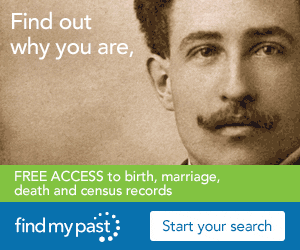




 You may have read our previous post on
You may have read our previous post on 


 kinds of records that may be out there waiting for you to discover. This week: Australian cemetery records, British military officer deaths, various U.S. passenger lists and North Carolina marriage records.
kinds of records that may be out there waiting for you to discover. This week: Australian cemetery records, British military officer deaths, various U.S. passenger lists and North Carolina marriage records. Tip: When searching within record sets like these, read the record collection description! Sometimes you are just seeing a partial collection that is being updated on an ongoing basis. Some years or locales may be missing from an otherwise complete record set.
Tip: When searching within record sets like these, read the record collection description! Sometimes you are just seeing a partial collection that is being updated on an ongoing basis. Some years or locales may be missing from an otherwise complete record set.

 Lastly, Findmypast has been adding to their over 4 million
Lastly, Findmypast has been adding to their over 4 million